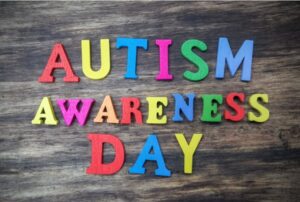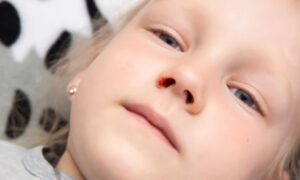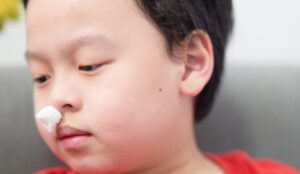Bipolar disorder, also known as manic-depressive illness, is not only a condition affecting adults; children and adolescents can also be diagnosed with it. This disorder is characterized by extreme mood swings, including periods of intense mania and severe depression. These emotional "roller coasters" can significantly impact a child's life, school performance, social interactions, and mental health. In this article, we’ll explore the symptoms, causes, diagnosis, and treatment options for bipolar disorder in children and adolescents, providing guidance for parents and caregivers on how to support their child.
What is Bipolar Disorder?
Bipolar disorder consists of two main phases:
- Manic episodes: During this phase, a child may experience elevated mood, high energy levels, hyperactivity, difficulty focusing, talkativeness, impulsive behavior, and reduced need for sleep.
- Depressive episodes: In contrast, depressive episodes are marked by extreme sadness, loss of interest in activities, fatigue, and possibly self-loathing or thoughts of self-harm.
These extreme mood swings can alternate over days, weeks, or even months.
Common Symptoms
Bipolar disorder in children and adolescents can present differently than in adults, but some common signs include:
- Emotional instability: Unexplained mood swings between high energy and deep sadness.
- Behavioral changes: During manic phases, children may show excessive confidence or impulsive behaviors, while in depressive phases, they may become withdrawn and downcast.
- Social and academic difficulties: The emotional ups and downs can make it difficult for children to maintain stable relationships or focus on school, leading to challenges in both areas.
Potential Causes
The exact cause of bipolar disorder is still unknown, but it is believed to be a result of a combination of genetic, neurochemical, and environmental factors:
- Genetic predisposition: A family history of bipolar disorder significantly increases the likelihood of a child developing the condition.
- Neurochemical imbalance: An imbalance of brain chemicals responsible for mood regulation, such as serotonin and dopamine, may be linked to bipolar disorder.
- Environmental stressors: Major life events, trauma, or ongoing stress can act as triggers for the onset or exacerbation of symptoms.
How is Bipolar Disorder Diagnosed?
Diagnosing bipolar disorder in children and adolescents can be challenging, as their emotions naturally fluctuate. Mental health professionals typically conduct thorough evaluations, gathering information from the child’s medical history, as well as input from parents, teachers, and observing the child’s mood patterns and behaviors.
Treatment Options
While bipolar disorder cannot be cured, symptoms can be effectively managed through a combination of medications and therapy.
Medication
Medications play a crucial role in managing bipolar disorder. Commonly used medications include:
- Mood stabilizers: Lithium is a widely used mood stabilizer that helps control both manic and depressive episodes, providing emotional balance.
- Anticonvulsants: Valproate, Lamotrigine, and Carbamazepine are anticonvulsant medications that also act as mood stabilizers, reducing extreme emotional swings.
- Antipsychotic medications: Aripiprazole, Olanzapine, and Quetiapine are antipsychotics used to manage manic episodes and sometimes depressive symptoms as well.
- Antidepressants: In cases of severe depressive episodes, antidepressants like Fluoxetine and Sertraline may be prescribed, though they are often used with caution and in combination with mood stabilizers or antipsychotics to avoid triggering manic episodes.
Psychotherapy
In addition to medication, psychotherapy is vital for the long-term management of bipolar disorder. Common therapy approaches include:
- Cognitive-behavioral therapy (CBT): CBT helps children recognize and modify negative thought patterns, teaching them coping mechanisms to better manage their emotions.
- Family therapy: Family support is essential for a child’s recovery, and family therapy helps educate loved ones about the disorder and how to assist the child in managing their symptoms.
How Parents Can Help
Children with bipolar disorder need strong family support. Parents can assist their children by:
- Maintaining a stable routine: A regular daily schedule can help reduce triggers for emotional swings.
- Open communication: Keep the lines of communication open with your child, understanding their emotions, and seeking professional help when needed.
- Monitoring treatment and medication: Regular check-ins with doctors are essential to ensure that the treatment plan and medications are working effectively and making adjustments when necessary.
Although bipolar disorder poses significant challenges for children and adolescents, with the right diagnosis, treatment, and family support, children can learn to manage their emotions and live fulfilling lives. If you suspect that your child may have bipolar disorder, consult a professional for timely diagnosis and treatment.
Reference:
National Institute of Mental Health (NIMH) - Offers comprehensive information on bipolar disorder, including symptoms, causes, and treatment options.
NIMH: Bipolar Disorder
American Academy of Child and Adolescent Psychiatry (AACAP) - Provides resources and information specifically about bipolar disorder in children and adolescents.
AACAP: Bipolar Disorder
Mayo Clinic - Offers detailed information on bipolar disorder, including symptoms, causes, and treatment strategies.
Mayo Clinic: Bipolar Disorder
Child Mind Institute - Provides insights into the challenges and treatment options for children with bipolar disorder.
Child Mind Institute: Bipolar Disorder
Psychiatric Times - Discusses the nuances of diagnosing and treating bipolar disorder in children and adolescents, providing expert opinions and research insights.
Psychiatric Times: Bipolar Disorder in Children













